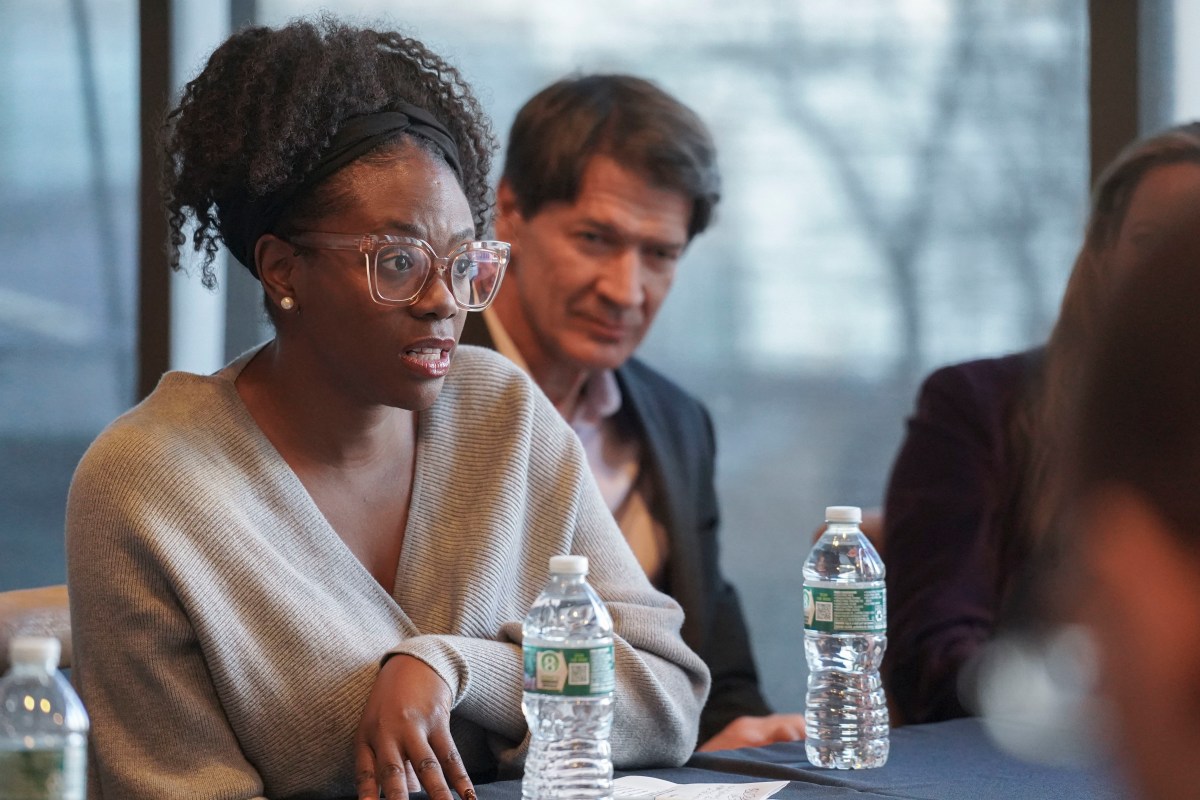By Josh Rogers
Affordable housing, parks and schools are some of the dreams Downtowners have had for the nearly $3 billion in federal community development money Congress approved for Lower Manhattan after 9/11. But large investments in those ideas may not be possible because much of the remaining money will be needed for infrastructure for World Trade Center office buildings and for the Sept. 11 memorial, a development official said Thursday.
Roland Betts, one of the more powerful members of the Lower Manhattan Development Corporation’s board, said many of the small projects under consideration have merit but they are “nibbling away” at the money required to help pay for higher priorities like equipment to support the five proposed office buildings and the cultural center, and to build the memorial itself.
“There’s no fat in the L.M.D.C. monies and the remaining money is going to be needed for the World Trade Center site,” Betts said at the corporation’s meeting July 8.
About $900 million is available in the $2.8 billion community development block grant allocations that were used to create the L.M.D.C. and fund Downtown projects. The large expenditures so far include: planning and design for the W.T.C. site and memorial; repairs to utilities and other damage connected to 9/11; residential incentive and business recovery grants; and to expand the W.T.C. site by buying the damaged Deutsche Bank building across the street. Under federal guidelines, the L.M.D.C. can’t spend more than five percent of the block grants on operating expenses.
No development corporation officials challenged Betts’ assessment of the financing problems during the meeting, although afterwards, one board member said these costs should be paid for by the Port Authority of New York and New Jersey, which owns the site.
“Why can’t the Port Authority pay for this,” said the member, who requested anonymity. “What are they charging for overhead?”
John Whitehead, chairperson of the L.M.D.C., said that it will be impossible to satisfy most of the requests for the development grant money. “The possible demands on that money that is available…far exceeds, by several multiples,” the supply, Whitehead said.
He said the board still had to wrestle with the big money questions before it would be able to move on to many of the other requests.
The L.M.D.C. is a strong supporter of two other big-ticket items that have not yet been funded. Gov. George Pataki, who created the L.M.D.C., has asked the agency to help pay for a proposed $6-billion rail link connecting Downtown to the Long Island Rail Road and J.F.K. Airport, although he and other Lower Manhattan advocates are hoping the federal government will pay for most of the project’s costs. The second item is the proposed W.T.C. arts and cultural center. In June, the agency picked four arts groups to run the center and at Thursday’s meeting, the L.M.D.C. board approved a $1.5 million feasibility study for the groups. Once cost estimates have been established for the two cultural buildings, the L.M.D.C. is expected to set up some sort of matching grant program to help the organizations raise money to build the center.
David Dyssegaard Kallick, a fellow with the Fiscal Policy Institute, criticized Betts’ comments. Now that it looks like the L.M.D.C. may not be spending much on the rail link tunnel, money should go to build affordable housing and job programs as opposed to supporting private offices, Kallick said after the meeting.
“It’s very frustrating,” he said. “This was the same story we heard when they wanted to spend the money on the rail tunnel. The public should not be subsidizing the construction of 10 million square feet of office space.”
Pasquale DiFulco, a Port Authority spokesperson, said the agency has discussed the L.M.D.C. paying for “public infrastructure” to support the whole site, such as security protections and a nearby bus garage for visitors to the W.T.C. memorial. That presumably could include the underground ramps and security areas needed for trucks to make deliveries to the office buildings.
Daniel Doctoroff, deputy mayor for economic development and rebuilding, said the L.M.D.C. has not yet been asked for a specific amount of money for the W.T.C. site, but the agency’s memorial and W.T.C. infrastructure investment would likely be somewhere in the neighborhood of a few hundred million dollars. The L.M.D.C. is a joint state-city agency and Doctoroff said the city would support using the block grant money on infrastructure connected to the memorial and cultural buildings, but not the offices.
He hopes to be able to use a significant amount of the L.M.D.C. money on Lower Manhattan projects off the W.T.C. site. The city has been looking at making improvements to the East River waterfront and has also joined the L.M.D.C. in studies to revitalize areas east and south of the W.T.C. – near Fulton and Greenwich Sts.
Doctoroff and Betts, a college friend of President Bush, are both hopeful the L.M.D.C. won’t have to spend much on the rail link. They and others have been lobbying Washington to shift an estimated $2.6 billion of unused 9/11-reated tax breaks to the project. House Speaker J. Dennis Hastert told Downtown Express a month ago that he thought Congress would approve more transportation money for Lower Manhattan.
Doctoroff said if the tax shift is approved, there will be about $4 billion committed to the $6 billion rail link – enough to make it practically inevitable.
“That gets us out to 2010, 2011, 2012 until you need more money and that will mean it will get built,” Doctoroff said.
He said the commuter link is essential to creating enough demand to make sure the proposed 10 million square feet of office space is built.
WWW Downtown Express



































